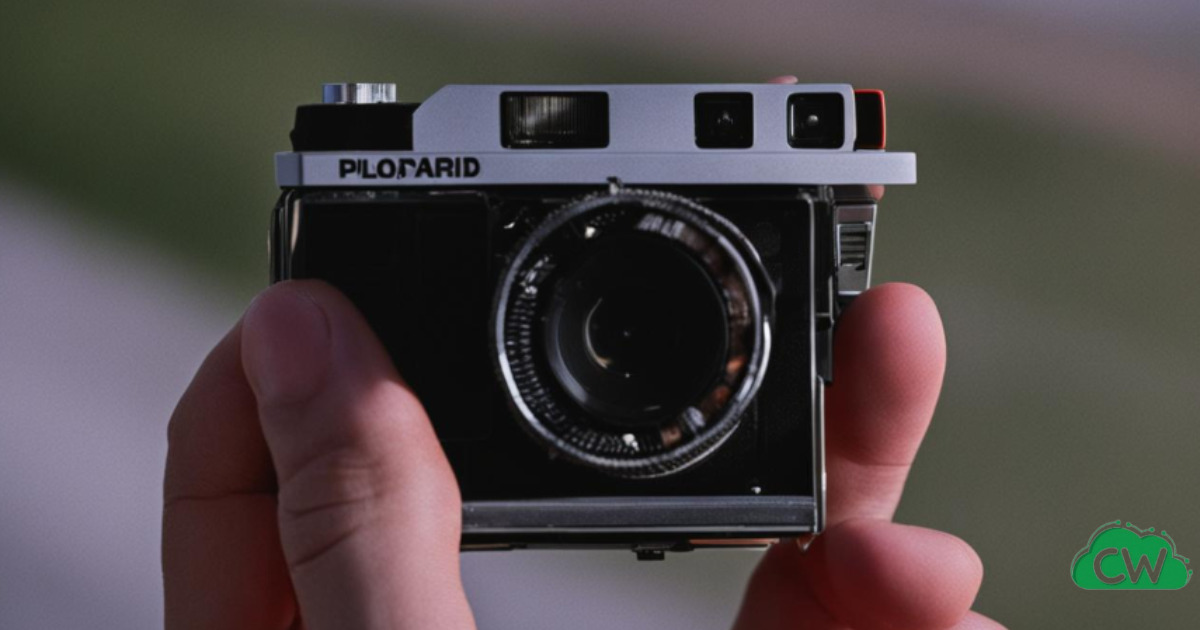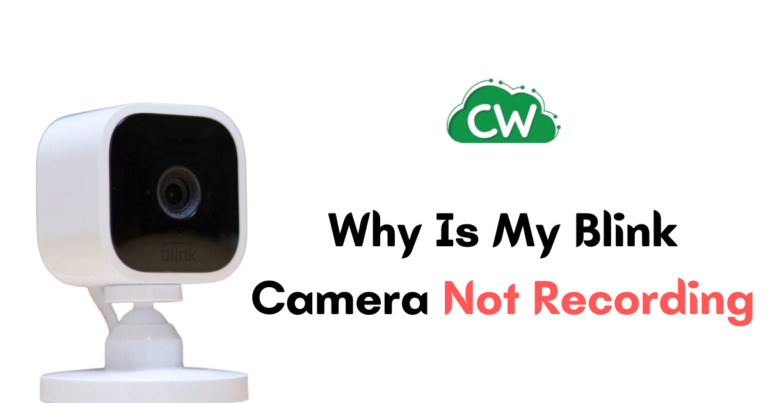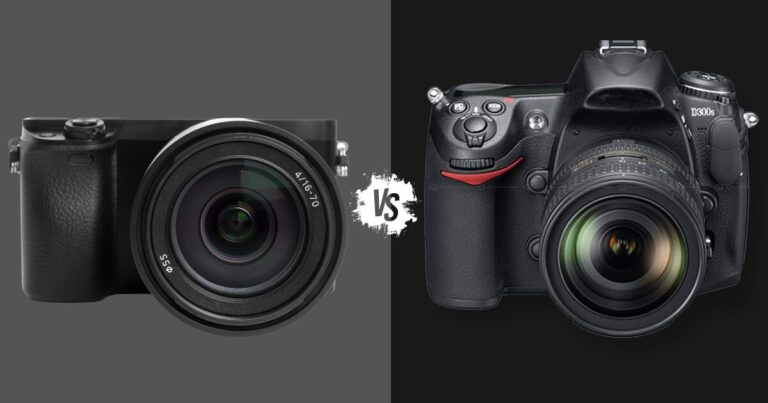Can You Bring a Polaroid Camera on a Plane? (Explained)

Traveling with a Polaroid camera can add a touch of nostalgia and creativity to your journeys. Before you head to the airport, you might be wondering if you can bring your beloved camera on a plane.
The good news is that the Transportation Security Administration (TSA) allows you to bring a Polaroid camera on board without any issues. Whether you prefer capturing unique moments in the sky or documenting your adventures on the ground, here’s what you need to know about traveling with a Polaroid camera.
According to the TSA, both carry-on and checked baggage are permitted for Polaroid cameras. However, there are a few important considerations to keep in mind to ensure a smooth airport experience. It is recommended to pack your unexposed film in your carry-on bag rather than checked baggage.
This will help protect it from potential damage caused by X-ray machines. At the security checkpoint, you have the option to request a manual inspection of the film to avoid any concerns about X-ray exposure.
When it comes to batteries for your Polaroid camera, including Alkaline batteries, you can bring them on board without any quantity limits. This means you can keep capturing those picture-perfect moments without worrying about running out of power.
So, whether you’re jetting off to a new destination or embarking on a road trip, feel free to pack your Polaroid camera and embrace the joy of capturing memories in an instant. Just remember to follow the TSA guidelines and take precautions to protect your film from potential X-ray damage. Happy travels!
TSA Rules and Guidelines for Carrying a Polaroid Camera on a Plane
The Transportation Security Administration (TSA) provides rules and guidelines for passengers traveling with a Polaroid camera. While their official website does not mention Polaroid cameras specifically, they are generally allowed in both carry-on and checked baggage.
There are some important things to keep in mind during the security screening process.
When going through airport security, you will need to remove your Polaroid camera from your carry-on bag or personal item. Larger electronic devices, including cameras, need to be placed in a separate bin for screening. Additionally, it is recommended that you request a hand inspection of any film with an ISO of 800 or higher.
By following these rules and guidelines, you can ensure a smooth and hassle-free experience when traveling with your Polaroid camera. The table below summarizes the key points to remember:
| TSA Rules and Guidelines for Carrying a Polaroid Camera |
|---|
| Allowed in both carry-on and checked baggage |
| Remove camera from carry-on bag or personal item for screening |
| Request hand inspection of film with ISO 800 or higher |
Following these guidelines will help ensure the safety and protection of your Polaroid camera and film while traveling by plane.
Travel Tips for Bringing a Polaroid Camera on a Plane
When traveling with a Polaroid camera, it’s important to take certain precautions to ensure its safety and ease during your journey. Here are some travel tips for packing and carrying a Polaroid camera on a plane:
Packing:
- Invest in a protective camera bag or case to safeguard your camera from any mishaps or accidents during the flight.
- Pack enough film for your entire trip, as some destinations may not have readily available Polaroid film.
- Place unexposed film in your carry-on bag instead of checked baggage to minimize the risk of damage from X-ray machines.
Security Checkpoint:
- Inform the Transportation Security Administration (TSA) officer about the presence of the camera and film inside your bag before going through the security checkpoint.
- For any films with an ISO of 800 or higher, consider requesting a hand inspection to avoid potential damage from X-ray screening.
- Ensure your Polaroid camera is easily accessible and be prepared to remove it from your carry-on bag or personal item during the security screening process.
Remember, using a Polaroid camera during the flight may not be ideal, as it may intrude on the privacy of other passengers or the flight crew. Instead, focus on capturing special moments once you’ve reached your destination.
By following these travel tips, you can enjoy the convenience and joy of carrying a Polaroid camera with you while ensuring its safety and compliance with airport regulations.
Comparison of Packing Options
| Packing Option | Advantages | Disadvantages |
|---|---|---|
| Carry-On Bag | – Easy access to the camera during the flight – Minimizes the risk of damage from checked baggage handling – Allows for a hand inspection of film if needed |
– Limited space for other personal items – Camera may need to be removed during security screening |
| Checked Baggage | – More space for personal items – Less hassle during security screening |
– Higher risk of damage from baggage handling and X-ray machines – Film may not be easily accessible for inspection |
TSA and Airport Security Procedures for Polaroid Cameras
When traveling with a Polaroid camera, it is important to understand and comply with the TSA and airport security procedures to ensure a smooth and hassle-free journey.
Although Polaroid cameras are generally allowed in both carry-on and checked baggage, there are regulations and guidelines that you need to follow to protect your camera and film from potential damage.
TSA Regulations for Carrying a Polaroid Camera
While the official TSA website does not specifically mention Polaroid cameras, they fall under the category of electronic devices and must go through the security screening process.
When going through the security checkpoint, you will need to remove your camera from your carry-on bag or personal item and place it in a separate bin. This allows the security officers to get a clear view of your camera during the X-ray screening.
Protecting Your Film from X-ray Exposure
One of the main concerns when traveling with a Polaroid camera is the potential damage to undeveloped film caused by X-ray machines. To minimize the risk, it is best to keep your camera and film in your carry-on luggage instead of checked bags.
You can also request a hand inspection of your film at the security checkpoint to avoid X-ray exposure. Be prepared to inform the TSA officer about the film and camera in your bag and be patient as they conduct the manual inspection.
It is important to note that instant film, including Polaroid film, is particularly sensitive to X-ray damage. To further protect your undeveloped film, consider carrying it in a clear Ziploc bag and labeling the film speed with a Sharpie.
These measures will make it easier for security personnel to identify and inspect your film without causing any damage.
Lastly, it is always a good idea to check with your specific airline for any additional regulations or requirements regarding the transportation of electronic devices or film. By adhering to the TSA and airport security procedures, you can ensure a seamless travel experience with your Polaroid camera.
Handling Instant Film in Airport Scanners
When traveling with instant film, such as Polaroid or Instax film, it is important to take extra precautions to protect your undeveloped film from X-ray damage at airport scanners. Here are some tips to ensure the safety of your precious memories:
1. Carry-On Baggage: Always keep your instant film in your carry-on luggage instead of checked bags. This helps minimize the risk of damage from X-ray machines used for checked baggage screening.
2. Hand Check Request: To avoid X-ray exposure, it is recommended to request a hand check for your instant film at the security checkpoint. Inform the TSA officer about the undeveloped film in your bag and ask for a manual inspection to keep it safe.
3. Protective Measures: To make the hand inspection process smoother, consider carrying your instant film in a clear Ziploc bag. Labeling the film speed with a Sharpie can also help security personnel identify and handle it correctly. Carrying an expired roll of film can further help facilitate the hand inspection process.
By following these precautions and taking the necessary steps, you can protect your undeveloped instant film from potential X-ray damage during air travel. Safeguard your cherished memories and ensure they remain intact until you’re ready to develop them.





